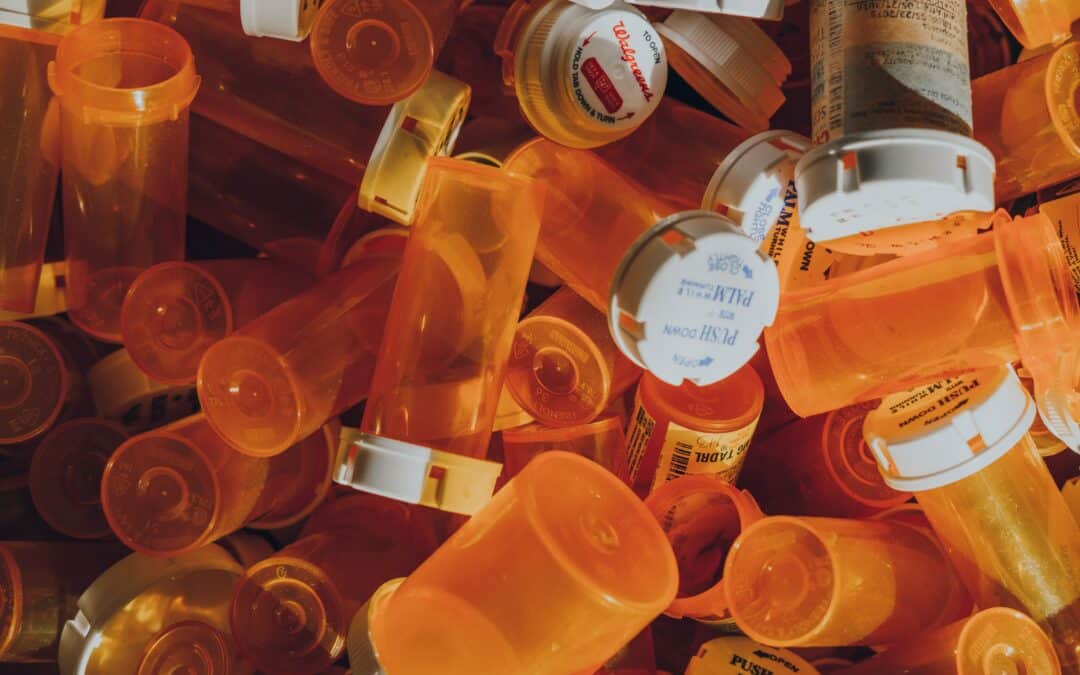
SAMHSA Upgrades Access to MAT in Opioid Treatment Programs
Written By
GET IN TOUCH WITH US
Follow Us On Social Media
Receive A Call
SAMHSA Upgrades Access to MAT in Opioid Treatment Programs
Learn about the vital role of MAT in opioid treatment and how new changes to federal regulations on opioid treatment programs can improve access to care.
— by Carl Yazbek
The opioid crisis has had a devastating impact on communities across the United States. Opioid addiction has led to increased rates of overdose deaths, as well as other negative health outcomes. Opioid Treatment Programs (OTPs) are an essential part of the response to this crisis, providing medication-assisted treatment (MAT) to individuals with opioid use disorder (OUD).
MAT typically combines medications like methadone or buprenorphine to help manage withdrawal symptoms with psychosocial counseling and additional behavioral health services. Opioid treatment centers are typically the only access points for methadone treatment for patients with OUD, and can be found in various settings, such as intensive outpatient programs, residential facilities, and hospitals. However, all of them must be certified by SAMHSA and accredited by a SAMHSA-approved independent body.
Critics argue that the OTP model is too restrictive, limiting patients’ access to crucial medication and treatments for OUD. Historically, methadone could only be prescribed at these clinics, and there were limitations on unsupervised or take-home doses of medications used for OUD treatment, necessitating daily visits to an OTP, even for outpatient care.
Federal Ruling Updating Opioid Treatment Program Standards
In a recent development, the US Department of Health and Human Services, through the agency of the Substance Abuse and Mental Health Services Administration (SAMHSA), has put the final touches on updates to the federal regulations that govern the treatment of opioid use disorder. These changes to the rules have the potential to bring about a substantial shift in the way opioid treatment programs are conducted across the country. The final regulation reflects the experience gained during the COVID-19 emergency and decades of research.
COVID-19 led to necessary changes in policy guidance and legal exceptions to safeguard public health, promote social distancing, and support the safety of patients and staff in OTPs. In 2020, SAMHSA introduced flexibilities allowing take-home doses of methadone and the use of telehealth for initiating buprenorphine. Research indicates these flexibilities improved access to treatment and eliminated stigma-related barriers to care in OTPs. A recent study found that patients who received the increased take-home doses permitted by these flexibilities experienced positive recovery impacts, including a higher likelihood of staying in treatment and lower chances of using illicit opioids.
The final rule eliminates stigmatizing or antiquated language, fosters a more patient-focused approach, and reduces barriers to receiving care. It also permanently integrates the flexibilities introduced during the COVID-19 public health emergency, including the use of telehealth technology and individualized decision-making.
Implemented Changes and Their Effects on OTPs
This move by the administration is a significant part of their continuing efforts to tackle the ongoing opioid crisis that has gripped the nation. The primary goal of these regulatory updates is to enhance access to quality care for individuals who are grappling with opioid use disorder, thereby providing them with better opportunities for recovery and reintegration into society.
Expansion of Take-Home Medication
The final ruling established a permanent provision for take-home medicines such as methadone, buprenorphine, buprenorphine combination products, and Naltrexone. Initially, this permits patients to get their medication doses for days when the clinic is not operational. Furthermore, at their discretion, the OTP practitioner can dispense medications for OUD to patients up to certain limits.
In the initial 14 days of treatment, patients are allowed to have a maximum of seven days’ worth of medication to take home. From the 15th to the 30th day of treatment, this limit is increased to a 14-day supply. After the first month of treatment, patients may be given up to a 28-day supply to take home.
The potential benefits of expanded take-home doses are numerous. Patients will no longer have to visit the OTP daily to receive their medication, which can be a significant barrier to treatment for some individuals. Increased access to care can improve treatment outcomes and reduce the risk of overdose. Patients will also have more flexibility in their treatment, which can improve their quality of life. This change will also reduce the stigma associated with visiting an OTP daily, which can be a significant barrier to treatment for some individuals.
Permanent Telehealth Flexibilities
Another significant change in the final ruling is the permanent telehealth flexibilities. The final rule permits OTP practitioners to initiate methadone or buprenorphine treatment through telehealth without a preceding in-person examination. This is possible if certain healthcare professionals, including the OTP physician or others under their supervision, determine that a patient evaluation can be conducted via audio-visual technology.
Due to the high sedation risk associated with methadone, SAMHSA has decided not to extend the use of audio-only telehealth for its prescription. If audio-visual technology is unavailable, methadone can be prescribed using an audio-only device, but only when the patient is in the presence of a licensed practitioner authorized to prescribe and dispense controlled medications.
Telehealth has become an essential tool in expanding access to care, and this change will make it easier for patients to receive the care they need. This change will improve access to treatment for patients, especially those in rural and underserved areas. The permanent telehealth flexibilities will make it easier for patients to receive the care they need, regardless of their location. This change will also reduce the burden on OTPs, which can improve efficiency and reduce costs.
Removal of Certain Requirements for Admission to an OTP
The final ruling also removes certain requirements for admission to an OTP to better align with evidence-based practice. These changes will improve access to drug abuse treatment for patients by removing unnecessary barriers to care.
Notably, the rule removes the necessity for patients to have a one-year history of opioid abuse before they can receive treatment in an OTP. Furthermore, the rule removes the requirement for patients under 18 to have failed opioid rehab twice before they could enter an OTP.
These changes will reduce the burden on patients and make it easier for them to receive the care they need. Patients will no longer have to meet unnecessary requirements to receive opioid use disorder treatment, which can be a significant barrier to care for some individuals.
Practitioners Ordering Treatment
The federal definition of a practitioner has been updated to include any health care professional properly licensed by the state to prescribe and/or distribute medications to treat opioid use disorder. This implies that, depending on state laws, a wider range of non-physician practitioners, like nurse practitioners or physician assistants, may be allowed to prescribe or order medication.
This change will improve access to care for patients by allowing practitioners to order treatment more efficiently. This change will also reduce wait times for patients, which can be a significant barrier to treatment for some individuals.
Impact on Patients and Communities
The opioid crisis has significantly affected numerous communities in the United States. The ongoing public health emergency declaration for the opioid crisis by the HHS further highlights this issue. These regulatory changes are aimed at mitigating this crisis and enhancing the lives of millions grappling with opioid addiction.
The final rule improves accessibility to treatment in Opioid Treatment Programs (OTPs) and emphasizes evidence-based and patient-centric care. The formulation of these changes has been guided by research evidence, feedback from stakeholders, public responses to the proposed rule, and the need to widen access to care in response to the escalating overdose epidemic.
The extensive changes brought about by this final rule aim to make permanent the existing flexibilities and modernize policies and practices based on evidence gained during the COVID-19 pandemic. SAMHSA believes that the bulk of what’s in the rule will not impose a significant strain on OTPs. Quite the contrary, it will lessen their burdens and provide numerous advantages to both providers and patients.
The final rule underlines the commitment to provide equitable and evidence-based care to OTP patients, often marginalized due to OUD. It aligns with the HHS Overdose Prevention Strategy and the National Drug Control Strategy, which both advocate for expanded access to and uptake of evidence-based treatments for substance abuse disorders. Improving access to care can enhance treatment outcomes and decrease overdose risks, thereby significantly impacting communities. Moreover, these alterations can help tackle health inequalities and enhance care accessibility for underprivileged groups.
Raising Awareness and Improving Access to Care
It is essential for individuals to learn more about OTPs and the resources available to them. By sharing this information with others, we aim to help raise awareness around opioid treatment, improve access to care, and reduce the stigma associated with opioid addiction. Together, we can work to address the opioid crisis and improve the lives of individuals and communities across the United States.
At Psyclarity Health, we offer comprehensive support for those struggling with opioid addiction and other substance use disorders. Our evidence-based approach aims to provide medication-assisted treatment with counseling and behavioral therapies. Our compassionate team of professionals is here to guide you through your recovery journey every step of the way. If you or someone you know needs help with opioid addiction treatment, we’re just a call away. Get in touch today.









